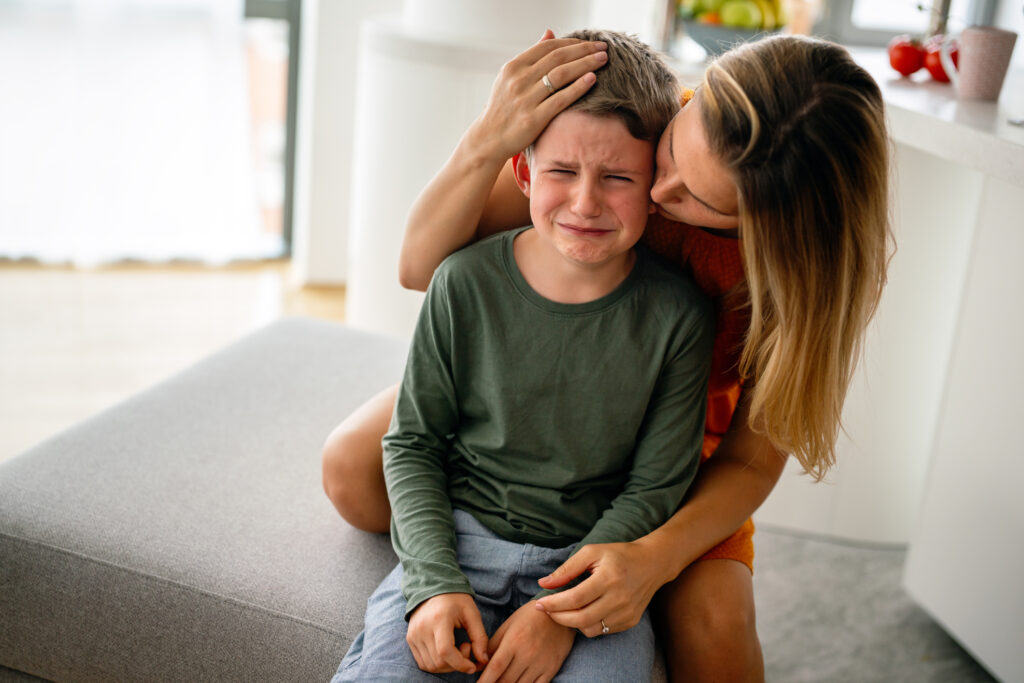Introduction
Have you ever felt bewildered or overwhelmed by the behaviours of the children in your care? You’re certainly not alone. Fostering is a journey that often involves navigating the complex landscape of emotions and trauma that children bring with them. These challenging behaviours can be the key to unlocking your foster children’s underlying needs and experiences. We can respond with empathy, support, and practical strategies by understanding why these behaviours occur. Throughout this post, we’ll explore the origins of these behaviours, their impact on children’s development, and practical ways to approach these situations with compassion and skill.
This exploration will cover essential topics, including attachment theory, trauma responses, and the role of a safe and supportive environment. With practical strategies and real-life applications, you’ll gain tools to effectively support the children in your care. We’ll delve into the fundamental principles of trauma-informed care, discuss the importance of co-regulation, and outline step-by-step strategies to help you turn challenges into opportunities for growth.
Let’s connect on this meaningful journey through the complex yet rewarding world of fostering and discover how understanding and responding to behaviour can create a pathway to healing and developing secure, trusting relationships.
Understanding Children’s Behaviour: A Trauma-Informed Foundation
What Are Trauma Responses?
Children coming into foster care often bring with them a history of experiences that can shape their behaviours in unexpected ways. Trauma responses are survival-based strategies developed by children who have experienced overwhelming or distressing events. These can manifest as fight, flight, freeze, or fawn behaviours. It’s vital to realise that these responses are not choices but automatic reactions to perceived threats.
The Link Between Trauma and Behaviour
Why does a seemingly minor incident trigger a big reaction in a child? Trauma impacts the brain’s development, affecting how a child processes stress and perceives safety. When a child feels threatened, their brain may trigger a defensive response to protect themselves, often leading to behaviours that can seem irrational or disruptive.
Challenges for Foster Children
For children in foster care, everyday scenarios can sometimes evoke trauma responses rooted in their past. A raised voice might remind them of past violence, or transitions between places might trigger a fear of abandonment. Recognising these behaviours as communication, rather than deliberate trouble-making, is a crucial mindset shift for carers.
The Role of Foster Carers
As foster carers, you’re at the frontline of understanding and supporting these behaviours. By recognising trauma responses and their impact, you can adapt your approach to meet the child’s needs, helping them feel safe and understood. You create an environment where healing is possible through compassionate and informed interaction.
Importance of Addressing Trauma Responses
Effects of Unmet Needs on Foster Children
When a child’s trauma responses are met with frustration or punishment, it can reinforce feelings of unsafe and mistrust. This response can heighten the child’s alert state, leading to more frequent or intense behaviours. Conversely, addressing these needs with empathy can help reduce anxiety and lay the foundations for healthier emotional regulation.
The Role of Secure Attachment
Attachment theory teaches that children form emotional bonds with their caregivers, influencing their ability to trust and build relationships. Without secure attachments, children may struggle with emotional regulation, which can impact their social, emotional, and cognitive development.
Long-Term Benefits of Understanding and Support
By responding appropriately to trauma-based behaviours, you can facilitate a process of healing. This allows children to develop resilience and better coping strategies. This approach helps the child feel secure and builds a trusting relationship that can positively influence their future.
Practical Strategies for Foster Carers
Co-Regulation: Calming Together
What is Co-Regulation?
Co-regulation involves helping a child regulate their emotions by being a soothing presence. When a child is overwhelmed, your calm, steady response can help them regain control.
How to Practice Co-Regulation:
– Maintain a calm voice and body language.
– Use phrases like, “I see you’re upset. I’m here with you.”
– Encourage deep, slow breaths to help calm the nervous system.
– Offer simple choices to help the child feel in control.
Identifying Triggers: Understanding Patterns
Steps to Recognise Triggers:
– Track behaviour incidents to identify everyday situations or stimuli.
– Notice environmental factors like noise, transitions, or interactions that precede a reaction.
– Collaborate with the child (if appropriate) to discuss feelings around specific events.
Build a Safe Environment
Creating a Comforting Space:
– Designate a “calm corner” with soothing items like soft cushions, books, or sensory toys.
– Ensure predictability in routines to help the child feel secure.
– Reinforce rules kindly, explaining how they keep everyone safe.
Develop Emotional Literacy: Naming Feelings
Encouraging Open Dialogue:
– Use age-appropriate language to label emotions, e.g., “It seems like you’re feeling angry because…”
– Read books that explore emotions and discuss the characters’ feelings.
– Create a feelings chart with visual aids to help younger children express themselves.
Building Trust Through Consistency
Fostering Secure Attachments:
– Follow through on promises to build reliability.
– Incorporate bonding activities like shared hobbies or storytimes.
– Celebrate progress and effort, no matter how small.
Advanced Applications for Complex Situations
Professional Collaboration: Reaching Out for Support
If a child’s behaviour consistently impacts their wellbeing or safety, seeking professional input can be beneficial. Psychologists, therapists, or specialised support workers can offer tailored strategies and interventions based on individual needs.
Understanding Sensory Needs
Some children are highly sensitive to sensory inputs, which can trigger overwhelming reactions. Occupational therapists can help identify sensory needs and recommend accommodations, such as noise-cancelling headphones or weighted blankets.
Strategies for Aggression or Fear Responses
Dealing with aggression can be challenging for both you and the child. Remember to:
– Anticipate signs of escalation and intervene early with de-escalation techniques.
– Avoid power struggles and focus on calming the immediate situation.
– Discuss incidents later in a calm moment, focusing on feelings and resolutions rather than blame.
Conclusion: Building a Path to Healing
Understanding and responding to trauma-informed behaviours is a continuous journey of learning and adapting. Through empathy, consistent support, and practical strategies, foster carers can immensely impact the healing and development of the children in their care. You’re not just addressing behaviours – you’re building trust, promoting growth, and opening doors to a brighter, healthier future.
As you apply these insights, remember that each small step contributes to a significant transformation. Your dedication and compassion are crucial in shaping the lives and futures of these children. Keep exploring, learning, and supporting – the impact of your care will resonate far beyond today.
|
ReplyForward
|


